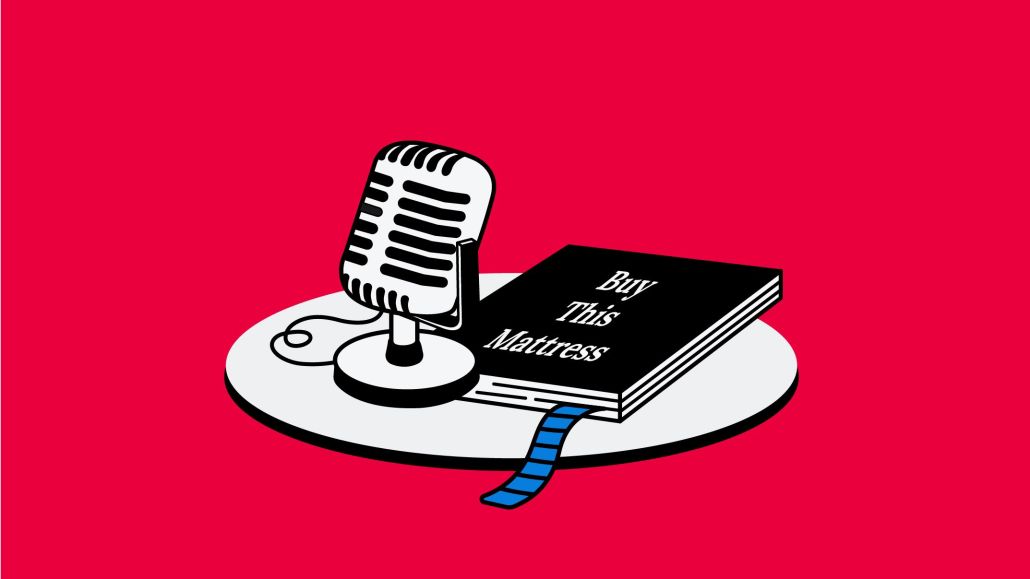Save 50% on a 3-month Digiday+ membership. Ends Dec 5.
Why marketers see audio as a ‘strong format’ worth investing in next year

At a time when advertising across many sectors is slowing down, podcast and audio investments might remain strong in the next year.
The audio business is continuing to grow on platforms, from live streams to exclusive shows, with varying success. Players from Spotify to Pandora owner SiriusXM saw ad revenue grow in the second quarter, whereas tech giants like Meta saw dips. Additionally, with Twitter and YouTube recently introducing podcast features, there are growing options for brands and creators to generate additional revenue and reach another demographic.
Experts say podcast listeners are a sticky audience, and the content offers more flexible ad formats. That might explain why the podcast advertising spend has grown from $806 million in 2018 globally to $2.6 billion this year, according to research firm WARC. In 2023, it is projected to reach nearly $2.8 billion globally, accounting for 26.8% of all online audio investments. By comparison, global ad investments in radio will drop an estimated 2.4% next year.
“Most people are running or driving or doing something while listening, and I don’t think they’re skipping through the ads,” said Nadia Gonzalez, CMO at Scibids. “Audio ads are a strong format at the moment.”
The variety in ad formats and devices to reach consumers is helping drive interest to this medium – from earbuds and speakers to smart home devices and car listening. The podcast format is effective, especially if you have an audience that likes a show or its creator, said James McDonald, director of data, intelligence and forecasting at WARC.
Many shows integrate host-read ads, for instance, which currently account for the largest share of ad spend in audio, according to WARC. One downside to host-read content is the fact that it’s not easily scalable. But to believers in the medium, that’s not an obstacle.
“Listeners have been found to not only understand but accept the value exchange of podcast advertising when it supports the content, and this can be a potent draw for brands as audiences often have a deep engagement and affinity with shows,” McDonald said.
Ad position: web_incontent_pos1
And with more devices for listening available, more adoption will lead to newer audio ad formats, such as shoppable or interactive ads. Paul Kelly, chief revenue officer of A Million Ads, believes podcasting as an ad-supported medium is “currently under-monetized.”
“Adding to cart [or] saving to a bookmarking list creates an entirely net new advertising surface for those moments where we are not actively consuming media,” Kelly said.
In fact, independent agency Ocean Media recently started a new podcasting team as more of its clients expand into that media. CEO Jay Langan said streaming and podcasting are by far their biggest areas of growth now. Ocean Media worked with car platform Vroom, for instance, aiming for a younger, tech-savvy audience with new media channels. After investing in a mix of podcasts and talk shows, such as “First Things First” and “Conan O’Brien,” the brand achieved 10% more efficiency in its upper funnel metrics and 43% more efficiency in the lower funnel.
“We’re pretty bullish on just the continued growth around podcasts,” Langan told Digiday. “It seems like something that at first people weren’t adopting as quickly and… in the last couple years, a lot of the audience members have just gone through the roof.”
Jared Lake, head of media investments at Ocean Media, explained that brands are very interested in the “high degree of affinity audiences have with shows.” He said compared to other channels, listeners find podcasts have less ad clutter. Brands also find that podcast content offers more creative flexibility than other ad formats elsewhere.
Ad position: web_incontent_pos2
“Given the number of ads in most shows, there is ample opportunity for brands to leverage that affinity,” Lake said. “Podcasts are an excellent environment to experiment with messaging and storytelling and not be constrained to a 30-second ad format. When you combine that flexibility with the affinity audiences have for the shows they love using with host-read ads, you have a winning formula.”
The other upside to podcasts is their potential to tap into a younger demographic as their consumption increases. In March 2022, Triton Digital and Edison Research found that Spotify was the No. 1 digital audio service for teens and adults in the U.S., with 35% of listeners age 12 and older using the service most. In turn, Spotify saw about a 40% increase in average podcast listening for Gen Z in Q1 2022 compared to the previous year.
This year, more than a quarter of digital audio ad revenues will come from podcasts, according to Adludio, a firm that produces mobile ads for agencies and brands. But Adludio CEO Paul Coggins contends that companies like Spotify still have “a long way to go” in convincing advertisers their platforms are effective at reaching younger people.
“More and more tech giants are offering podcasts, but the likes of YouTube still need to prepare holistic ad solutions within their platforms in order to cement the trust of privacy-conscious audiences,” Coggins said.
More in Media

Digiday+ Research Subscription Index 2025: Subscription strategies from Bloomberg, The New York Times, Vox and others
Digiday’s third annual Subscription Index examines and measures publishers’ subscription strategies to identify common approaches and key tactics among Bloomberg, The New York Times, Vox and others.

From lawsuits to lobbying: How publishers are fighting AI
We may be closing out 2025, but publishers aren’t retreating from the battle of AI search — some are escalating it, and they expect the fight to stretch deep into 2026.

Media Briefing: Publishers turn to vertical video to compete with creators and grow ad revenue in 2026
Publishers add vertical video feeds to their sites to boost engagement, attract video ad spend and compete with news creators.
Ad position: web_bfu



